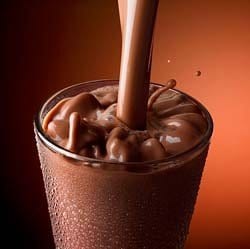 This September, schools and moms will have a little more incentive to give their children flavored milks: according to the Milk Processor Education Program, that’s when calories and sugar will be reduced in these kid-favorite flavored milks.
This September, schools and moms will have a little more incentive to give their children flavored milks: according to the Milk Processor Education Program, that’s when calories and sugar will be reduced in these kid-favorite flavored milks.
MilkPEP, the organization responsible for the National Milk Mustache “Got Milk?” Campaign, stated that starting later this year, cartons of flavored milk will contain fewer than 150 calories and 22 grams of sugar on average.
The 2010 Dietary Guidelines for Americans states that milk provides excellent benefits for children’s development, including vitamin D, calcium, and potassium. These vitamins and minerals are underrepresented in the diets of American children, making milk a great drink of choice.
Milk is the number one source for these nutrients in the United States, according to MilkPEP.
Flavored milk, while popular with kids, has always contained more calories and sugars than regular white milk. However, the milk industry has completed a five-year reformulation process that will see cartons of flavored milk having just 31 more calories than cartons of plain milk. These reformulations were designed to “provide nutritious new products with the same great taste kids love,” said MilkPEP.
The reformulations will also reduce sugar content in flavored milks by 38% for both fat-free and low-fat chocolate milk.
“There are a lot of kids that don’t want to drink plain white milk; they really love drinking flavored milk and that’s very important for the essential nutrients in milk,” said Vivien Godfrey, CEO of MilkPEP. “It’s a happy balance between some added sugars but making sure that the kids actually drink the milk as opposed to taking the white milk on the lunch line and not in fact drinking it.”
Flavored milk has drawn controversy for its role in the diets of developing children amid growing obesity trends in children. Almost one in three American children is obese or overweight, while the USDA Healthy Eating Index rates the average child’s diet at a score of 55.9 out of a possible 100 points.
Some schools have removed flavored milk entirely from the menu at cafeterias, citing the excessive intake of sugary drinks by children. These drinks, such as sodas, make up nearly half the sugar in the daily diet of an average child; according to Godfrey, however, flavored milk makes up only 3% of that total.
The efforts to reformulate flavored milk to be healthier were undertaken in light of research showing that many students refuse to drink milk at all if flavored milk is not available. MilkPEP conducted a study of 58 elementary and secondary schools and found that milk consumption overall fell 35% when flavored milk was not offered.
The School Nutrition Association’s “State of School Nutrition 2011” report stated that 98% of school districts in the U.S. have fat-free, skim, or 1% milk options available to kids and 95.4% give students the option of drinking flavored milk.
“Changes are huge because milk is so important and we sell probably 70 percent of our milk to students,” said President Elect Sandra Ford of the School Nutrition Association. “To take away that chocolate milk to those students would be devastating to a children’s calcium intake, so we like that producers have responded by reducing the sugar themselves.”
According to Godfrey, MilkPEP is an agricultural “check off” program, one of 18 in the country. All U.S. milk processors large enough to qualify are mandated by Congress to pay into a marketing pool run by MilkPEP.